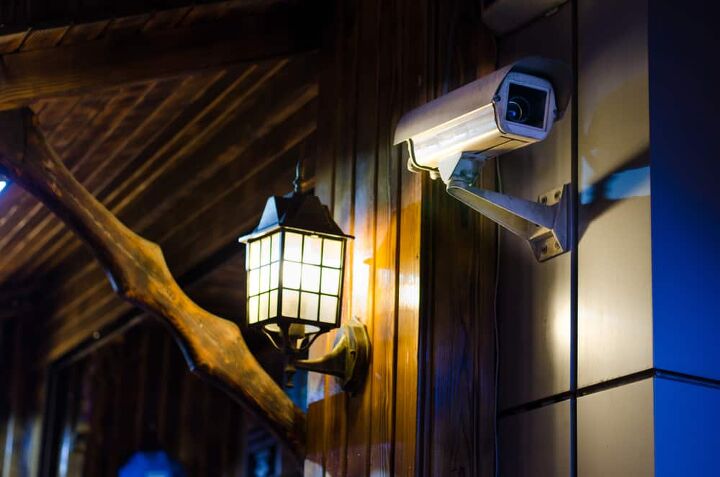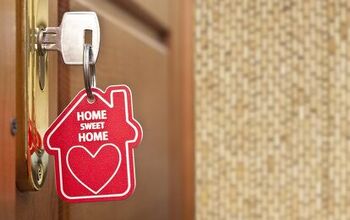How To Run Security Camera Wires Through The Attic

Having a security camera is a nice way to get peace of mind no matter where you live. It is not just to protect you from burglaries, it can also keep an eye on your backyard, see who is at your door, and they can even lower your insurance rates. You want the would-be burglars to know about your surveillance, but you do not want to give them access to the wires. So, we are going to explain how to run your security camera wires through your attic.
You can run your security wires through the soffit or along the same lines as the cable lines are run. The most important thing is to keep them out of sight outdoors and to be able to connect them to your CCTV or DVR on the inside.
There are many kinds of security cameras but if you choose the wired kind, you will need to find a way to run the wires so that they are hidden. After all, what is the point of having a security camera if the wires are hanging out for anyone to tamper with?
Do You Need Alarm or Security System Installers?
Get free, zero-commitment quotes from pro contractors near you.

Running Security Camera Wires Through the Attic Through the Soffit
For this, you are going to need a good cordless drill with a variety of drill bits, a screwdriver, a wiring fish tape, electrical tape, electrical connectors, and some type of saw.
Step One: Measuring the Wire
Once you decide where you want to place the camera, you will need to measure the area between the camera and where you will have your main hub to make sure you have enough wire. Do not forget to measure the vertical distance from the attic and back to the camera.
Step Two: Attach the Camera
Remove the soffit and put a piece of wood up inside the soffit to secure the camera. Use the drill to make holes for the camera’s mounting screws in the wood and a larger hole to run the wiring through. Attach the camera and replace the soffit.
Step Three: Dress for Protection
The insulation in the attic is not good for you to breathe or get on your skin. You will need to wear personal protective equipment like gloves, eye protection with side shields, earplugs, sturdy shoes, and a mask that is rated at N95 or above. You should also have on long pants and a shirt with long sleeves because insulation can irritate your skin.
Step Four: Go to the Attic
Up in the attic, make sure you can get to the space you need access to. You may have to move some things or put down a board or something to walk on. Drill holes for the wire to pass through if you do not already have a spot and use your fish tape to pull the wiring down to the camera.
Step Five: Secure the Wires
Use a staple gun to hold the wires to the rafters from the hole. Make sure the staples are large enough. If they are too small, they may pierce the wire and cause a fire. You should also run the power and DVR wires to where you want them to be if you are not going to keep them in the attic. Most people put them in a spare room or a closet. Secure the wires with staples.
How to Run Security Camera Wires Through the Attic with the Cable Wires
If you already have cable wires or some other type of wires running through your home from the attic, you can add your camera wiring to the same holes. If the holes are not big enough, you can use a jigsaw or keyhole saw to widen it a bit.
Step One: Measure the Wire
Make sure you have enough wire by measuring the distance from where you want to place the camera to the attic and then to the place you are going to want the DVR. Don’t forget to measure the vertical space to and from the attic.
Step Two: Place Your Camera
Place your camera wherever you want it to be and secure it with the mounting screws that came with it. Using a drill to predrill the holes is the easiest way. Push the wires through the hole where the cables are and head up to the attic.
Step Three: Wear Your Protection
To keep from breathing in the insulation in the attic, you will need a mask that is N95 or higher. You will also need to protect your eyes with goggles or glasses that have side protection and your ears with earplugs. Insulation will also irritate your skin so wear long sleeves, pants, and gloves as well.
Step Four: Attaching the Wires
When you get up to the attic, find the spot where the cables enter your house and the end of the wiring you pushed through from downstairs. Pull the wires through the attic, using a staple gun to secure them as you go.
Step Five: Run Wires to the DVR
Your camera has to have a main hub where you can have the DVR to record video and images. Pull the wires along whatever route the cables go until you get to where you need them to be, using your fish tape if needed.
Step Six: Hooking Up the DVR
The main hub for the DVR is typically in a spare bedroom or closet. If your cable does not run where you want it to, you will have to drill new holes to pull the wires through. Attach the DVR to the wall or on a flat surface, securing everything in place.
Do You Need Alarm or Security System Installers?
Get free, zero-commitment quotes from pro contractors near you.

Related Questions
What are some of the benefits of using a security camera with a DVR instead of wi-fi or home security service?
Although wi-fi is the most popular choice since it is typically the easiest, in many areas this may not be feasible. For example, some rural areas do not have wi-fi available. Also, you cannot always count on the wi-fi system in many areas. In this case, you can use a home security service or a wired security camera. There are several benefits of having a security camera with a DVR.
- Scare away the burglars: If a would-be burglar happens upon your house and sees a security camera, they will likely go somewhere else. They do not want to be caught on camera so just seeing the camera is enough for most criminals.
- Know what is going on: You will be able to see what is going on wherever you have your camera pointed. Whether it is in the backyard, on the side of the house, or at the front door, you can catch who is coming and going by just watching the camera.
- See who is knocking: In some cases, you can watch the camera live so you can decide whether or not to answer the door when an annoying neighbor or salesperson knocks. Similar to the Ring doorbell camera, you do not have to go to the door to see who it is. Just look at the camera feed to know if you want to answer or not.
- Help the police: If there does happen to be some sort of crime on your property, you can help the police investigate with your videos or photos from your DVR. It may even help out one of your neighbors who do not have security cameras.
There are two types of security camera wire guards. One kind is a long strip of strong protective casing to put over the wires and the other is a metal cage to put over your cameras. You should probably have both if you have particularly bothersome animals like squirrels or birds around
Is it okay to splice security camera wire?You can splice the wires with a power wire or cable wire if needed. First, turn off all the power to the house so you do not get electrocuted. Strip the insulation from the cables and then remove ½-inch of the insulation from the two wires of each cable. This should include the positive and negative wires. Then, use wire connectors and electrical tape to securely connect the positive wires together and the negative wires to one another. Make sure there is no bare wire showing.

I am a DIYer who loves writing about anything home-related. When I am not writing, you can find me studying for my PhD in Psychology, photographing nature, and swimming at the lake with my grandkids.
More by Patricia Oelze

















![Standard Dining Room Table Dimensions [for 4, 6, 8, 10 and 12 People]](https://cdn-fastly.upgradedhome.com/media/2023/07/31/9074335/standard-dining-room-table-dimensions-for-4-6-8-10-and-12-people.jpg?size=350x220)









